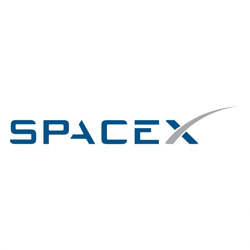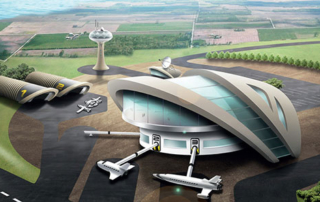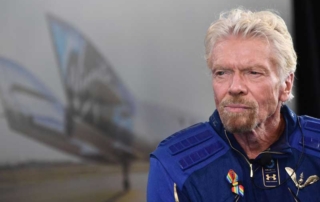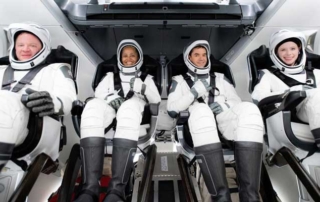Compare Space Flights at Space Flight Deals
If you’re looking to fly to space or wishing to find out how much does it cost to fly to space then you’re in the right place. Keep up to date with all the latest space flights and much much more.
Blue Origin will not only take you to space, but promises to able to make you live and work there.
Latest Space Travel News
Want to find out whats happening in the world of space flights? Keep up to date with all the latest space travel developments.
Space Flight Deals – The Future of Space Travel Here Today
Space flight deals is the leading website to find your space flights. Whether you’re looking to book a flight into space or whether you simple want to find out more information then you’re in the right place.
It is now barely sixty years since the very first time a man-made object was sent into outer space. That was the Soviet Union’s iconic Sputnik spacecraft, which was launched into low Earth orbit in 1957. Only a few years later, in 1961, Yuri Gagarin made his way beyond the Earth’s atmosphere to become the first human in space. Soon, very soon, it is likely that such seemingly unique journeys will be everyday events. The day is coming where you will soon be able to book your space flight deals online.
You may think that this is a wildly optimistic assessment of the prospects of everyday space travel, but consider this. The first powered aircraft flight was achieved by the Wright Brothers in 1903. By 1958, less than sixty years later, two competing companies, BOAC and Pan Am, were running competing passenger carrying trans-Atlantic flight services. These were available for well-heeled passengers only, of course. But by the 1970s, seventy years or so after the first human ventured into the skies, even the masses could afford to travel by air. Millions used package tours to fly around Europe, and Laker Airways’ Skytrain service ran jet airliners across the Trans-Atlantic route.
Looked at on this timescale, you can see that we are just about on target to start booking space flights ourselves. Sixty years since the very first human space flight, we are on the brink of the first commercial passenger carrying space flight. Using the same scale, we can certainly expect to see affordable space flights within the next decade.
This is especially the case when you consider that several private operators are already planning regular commercial space flights. Soon, anyone with a typical income may be able to experience the weightlessness of space and a spectacular view of our beautiful blue planet.
And this is not just pure speculation. Some of the most famous and most wealthy businessmen in the world have invested their fortunes into operating regular commercial flights into space. Jeff Bezos, the mogul behind the Amazon internet trading company, is responsible for funding his Blue Origin space technology company. Meanwhile, Elon Musk, the joint founder of the electronic payment service PayPal and now leader of the Tesla electric car company is busy designing a space capsule as part of his SpaceX organisation. Plus there is the United Kingdom’s Sir Richard Branson, who should soon be operating regular space flights via his Virgin Galactic operation.
All three have already sent rockets into space and have actual human compatible space capsules ready for launch. Both Blue Origin and SpaceX have already sent cargo into orbit, including working with NASA to deliver satellites into low Earth orbit, or even deliver goods and equipment to the International Space Station (ISS). Meanwhile, Virgin Galactic may not have achieved this feat but, on the other hand, they are the first privately owned company to send actual people into space. Test pilots Mark Stucky and co-pilot Fred Sturckow achieved this in December 2018 – the first manned spaceflight to take off from United States territory since the Space Shuttle was retired in 2011.
But these are just the big name, publicity hungry operations. There are more prospective spaceflight companies that you may never have even been aware of, like Bigelow Aerospace for example. All these prospective space tourists will need somewhere to stay after all, and Robert T. Bigelow has already designed and constructed a commercial space station. It’s ready for launch. Could this be the very first space hotel?
So with all these billions of dollars being invested, and regular unmanned space flights already being achieved, it really is only a matter of time before regular, passenger paying commercial space flight deals will be an everyday reality and be readily available.
Of course, in the beginning, it is true that you are going to need to be a millionaire (at the very least) to afford to take the trip. But prices will come down as flights become an everyday event, just like they did with air travel in the 1970s. And the fact that there are so many different companies all with their own plans means that competition is likely to drive prices down still further, and quickly. Maybe soon it will be possible to take a trip into space for a similar price to that of a first class trans-Atlantic flight today.
Certainly within the foreseeable future, maybe even by the end of the 2020s, it should be possible that you too will be able to follow in the space boots of the original heroes of the Space Age: those brave Russian cosmonauts and the many pioneering American astronauts who really were made of “the right stuff”.
While we dream of floating in the blackness of space, let’s have a look at the historic achievements that have led us to the point where everyday space travel could be a realistic possibility for millions…
History of Human Spaceflight
The first twenty years of what became known as the Space Race were powered by one overwhelming driving force: the Cold War. Ever since the end of World War Two in 1945, an “Iron Curtain” had divided East from West, as the Soviet Union and the United States competed for political influence with military might.
The major symbol of this was the race to build and test bigger and more powerful nuclear weapons. Throughout the 1950s, this race continued, but in 1957 a new area of competition was opened as the Soviet Union startled the world with the launch of its Sputnik satellite. The military implications of this were obvious, and the Russian success sent the United States and the Western world into a bit of a paranoid panic.
While the Americans raced to catch up, this foreboding was only made worse when Yuri Gagarin became the first cosmonaut in 1961. The American Alan Sheppard was raced into space just a month later in response, but the Americans were clearly playing catch up: Sheppard’s was a brief up and down flight, while Gagarin had completed a full orbit of the Earth.
It was this shock that led the United States’ President John F. Kennedy to make his famous speech in September 1962, launching the race to the Moon. This included the famous, often replayed line “We choose to go to the Moon in this decade and do other things, not because they are easy, but because they are hard”.
The speech was necessary, because the President needed to persuade the American people to accept the very high level of spending necessary to achieve the goal of putting a man on the Moon by the end of the 1960s. The total cost of the Apollo programme has been estimated to have been around $150 billion in today’s prices. In any case, this represented the majority of the United States’ space agency (NASA) budget, and a large proportion of US federal spending. Indeed, at the time of peak spending in the mid-1960s, the cost of the Apollo programme reached almost 5% of the total federal budget.
… But the President had set a challenge, and the race to the Moon was on.
Apollo and the Race to the Moon
The Soviet Union certainly got off to a good start, launching the first satellite, and putting the first human in space, but it was the United States which won the race to the Moon. Apollo 11 touched down on the lunar surface on July 20th 1969. Neil Armstrong later stepped onto the surface of the Moon, with his immortal line “That’s one small step for man, one giant leap for mankind.”
It had taken billions of dollars, the lives of three astronauts (the crew of Apollo 1 had died in a launch pad fire in 1967) and a supreme national effort to get there, but once the race was won, enthusiasm for the Apollo moon landing programme started to wane amongst the American public. Five further successful lunar landings were made (Apollo 13 failed to make a landing after an on-board oxygen tank ruptured), ending with Apollo 17 in December 1972. But even before this, the decision had been taken to cancel the proposed missions of Apollo 18 and 19. A dozen astronauts had stepped onto the surface of the Moon, but no-one has returned since. The Americans had other priorities…
History is written by the winners, but there is no doubt that the Soviet Union had attempted to match the US efforts all the way. An engineering model of the Soviet LK-3 Lunar Lander was displayed in London’s Science Museum as part of its “Cosmonauts: Birth of the Space Age” exhibition in 2015 – 16, demonstrating the intention of the Russians to make it to the Moon first. There is no doubt the Soviets were close to achieving a manned lunar landing too, but perhaps President Kennedy’s challenge earlier in the decade was what ultimately provided the incentive for the Americans to get there first – there was an additional determination to make the achievement “before the decade was out”, which the Soviets did not have.
The Next Stage: Space Stations
Once the race to the Moon was over, the Soviet Union began to turn its attention to the next target in space technology: the space station. This has been the priority ever since of both the old Soviet regime and the new Russian Federation administration, which succeeded it in the early 1990s.
Indeed, April 1971 saw another Soviet first, with the launch of the first ever space station, Salyut 1, on April 19th. The Americans followed with Skylab in May 1973.
At this point, the race was apparently still on, but the mood was changing and the political background was now in flux. The cost of all this military spending and investment in space technology was very heavy for both sides, and the appetite for continuing was fading. This was the era of “détente”, when the two old adversaries of the Cold War attempted to come to a new arrangement. In May 1972, President Nixon and Soviet leader Leonid Brezhnev negotiated a new political settlement and the Cold War began to thaw.
This had its effect on the Space Race too, as the two sides began to co-operate, rather than compete. This new era was demonstrated in July 1975, when the last Apollo spacecraft was launched in a joint mission with the Soviet Union’s Soyuz 19. The two spacecraft met and docked in orbit, enabling the two crews to meet in space. The three American astronauts and two Russian cosmonauts visited each other’s capsules, conducted joint experiments and exchanged presents before returning safely to Earth.
While this spectacular mission marked a new era in space exploration and co-operation, the two nations continued with their independent programmes. The Americans developed the Space Shuttle, a re-useable space craft which was launched on the back of a rocket, but landed by gliding to the surface, landing on a runway like a plane. This new spacecraft was intended to provide transport to and from any future space stations, and ferry the necessary supplies to keep it running. The Space Shuttle could also provide a vehicle for launching satellites into space, via the large cargo hold on board.
Meanwhile, the Soviets continued with their space station programme, launching the MIR station in 1986. They continued to use their old warhorse, the ever reliable Soyuz spacecraft: 1960s technology which is still in operation to this day.
The Soviets (subsequently the Russians) and Americans continued to co-operate, with the Space Shuttle being used to supply the MIR space station and joint missions arranged so that both US astronauts and Russian cosmonauts served together on the station.
The new spirit of collaboration continued with the joint development and construction of the International Space Station (ISS). Launched in a series of different stages and constructed in space, this orbiting laboratory was completed in 1998 and continues to orbit the earth to this day.
The Space Race Continues…
The original Cold War Space Race was run by just two horses, the United States and the Soviet Union. Today, things are much more complicated. The Americans and Russians are still in the race, but the field is far more crowded. Increasing numbers of other nations are running their own programmes, either on their own or in collaborative projects.
The Chinese are one of the biggest spenders, and now a major player in space technology. They have already launched and operated a successful space station (Tiangong-1), which ended in 2018, and a new station is planned. Meanwhile, their lunar lander Chang’e 4 became the first spacecraft to successfully land and communicate with Earth from the far side of the Moon in January 2019. The European Space Agency (ESA) are big spenders too, with successful launches like the Rosetta mission. This spectacular spacecraft managed to land on and photograph the 67P/Churyumov–Gerasimenko comet, notable for its apparent duck-like shape.
In fact, by 2014, thirteen different nations (or confederations) had successfully launched rockets into orbit, including unheralded missions from nations such as South Korea, Iran and Japan. Dozens more nations have space programmes which are intended to reach space in the near future.
Furthermore, as of 2018, people from close to forty different nations have been into space, including astronauts from countries like Afghanistan, Bulgaria, Syria and Vietnam. The United Kingdom has provided two astronauts via the ESA, Helen Sharman in 1991 and Tim Peake in 2015.
But the biggest difference today is that it is not just the big nation states and international confederations that are operating in space. Big commercial companies are in on the act too, and it is through these organisations that the prospect of everyday space travel is likely to be realised. Blue Origin, SpaceX and Virgin Galactic are just three of the more famous companies involved in this new race for space, but there are many more.
It is now nearly fifty years since humans last left Earth orbit, but at last, with these commercial companies providing the dollars and the enthusiasm, there is again the prospect of humans setting foot on other worlds. The Chinese have plans to build space colonies on the Moon, while Elon Musk has set his target even more ambitiously, on Mars.
Meanwhile, the prospect of the likes of you and I being able to sample the effects of weightlessness and experience the emptiness of space gets ever closer…







